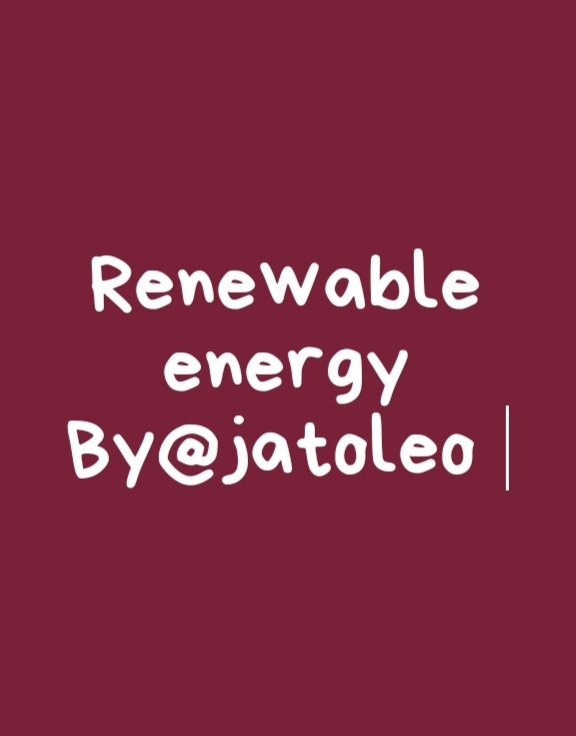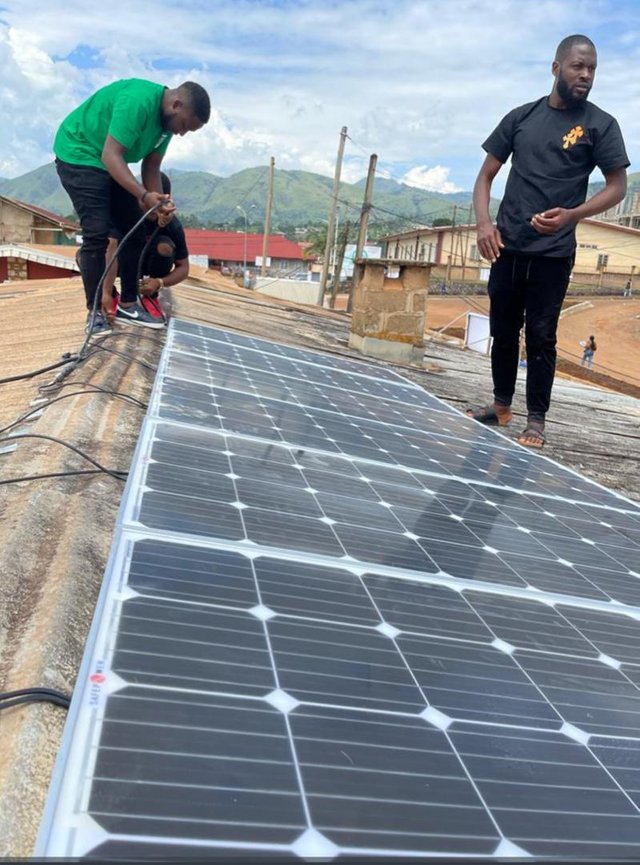
Hello everyone, hope you're well. Today I will like share a little more renewable energy.
The building blocks needed in all our day-to-day activities require energy to operate. The usage of this energy is never ending therefore an infinite supply of energy is required. Typically energy is the capacity of a body to do work and depending on how fast the source is replenished; it can referred to as either Renewable Energy or Non-Renewable Energy.
Renewable energy refers to those energy sources than are naturally replenished faster than they can be depleted. For instance, Solar, Geothermal, Hydropower, Bioenergy, Wind energy amongst others are all sources of renewable energy as they are naturally replenished faster than they can be used.
With the constant and rapid increase in the world’s energy demand, Solar Energy stands out as the solution to our world’s energy needs as its supply dwarfs other renewable energy sources coupled with it being a green energy source. Solar Energy is the energy produced by the sun and its supply to the earth per day (173,000 terawatts) is more than 10,000 times the world’s annual energy requirements.
Energy produced from the sun travels in photons to the earth surface. These photons can be converted to electrical energy through a process called photo electricity. To capture this energy, PV (Photovoltaic) cells are exposed to the sunlight. These cells are made with semiconductors with excitable electrons and when these electrons absorb energy from the photons, they are freed from their shells to move about. This continuous excitation of valence electrons produces a stream of mobile electrons hence electricity. This stream of electrons is either stored in a reservoir (Battery) for later use or fed directly to the load via the Inverter under the control of the Charge Controller. The Inverter is used to convert the Direct Current (DC) produced by the PV cells into Alternating Current (AC) on which our home appliances run.
With Photovoltaic being relative newer in the energy field, its application is relatively more expensive though it pays for its self in the long run. This is because to setup a PV system, its installation is expensive but once setup, only minimal maintenance is required for decades and the system is self-sufficient. In order to setup a PV system, the energy requirement (load) is required. Then a well dimensioned system to produce enough energy to supply the load is then setup.

Below are some advantages and disadvantages of Solar Energy;
Advantages
• It is a Renewable energy source
• It is a clean energy source
• Low maintenance cost
• Reduced electrical bills
Disadvantages
• Expensive to setup
• Optimum energy production depends on the weather
• Installing the system typically uses a lot of space.
conclusion
Cameroon being a country blessed with over 4hours of daily sunlight is uniquely advantaged to use this abundant supply seeing as it is constantly surviving constant power outages. The application of solar energy in Cameroon would reduce the publics over dependence on the Government to power the nation and at the same time promote the usage of ecofriendly energy sources.